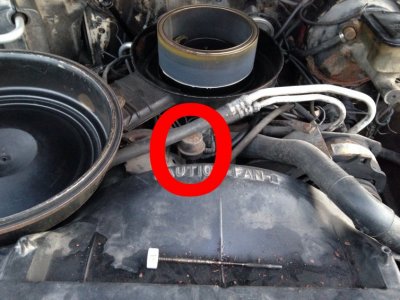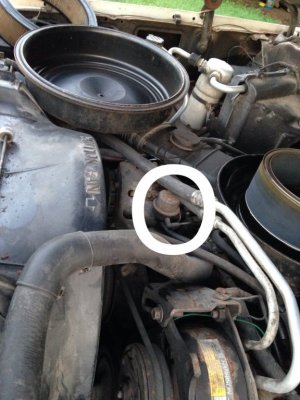He's right - it's the decel (deceleration) valve. It is part of the A.I.R. system:
Deceleration Valve
The deceleration valve is used with the AIR system to help prevent backfiring during high vacuum conditions, Fig. 17. Vacuum draws the mixture valve diaphragm down and opens the valve allowing air from the air cleaner to flow into the intake manifold.
You must be registered for see images attach
A.I.R. System - description of operation:
This system consist of a belt driven air pump (s), internal drilled passages in the cylinder head or manifolds, piping and hoses, electric air control valve and check valves. The vane type air pump (s) supplies air through a centrifugal filter fan to the electric air control (EAC) valve, Fig. 11.
The electric air control valve directs air to either the exhaust manifold ports or the air cleaner, which also acts as a silencer.
On all engines except 1987 Federal V6-173 engines, at cold engine coolant temperatures or at wide open throttle conditions, the Electronic Control Module (ECM) will energize the electric air control valve solenoid, directing the air to the exhaust manifold ports. At higher engine coolant temperatures, the electric air control valve solenoid is de-energized, directing air to the air cleaner. Also at higher engine speeds, air is directed to the air cleaner through the pressure relief valve even though the solenoid may be energized.
During engine deceleration, a rise in the manifold vacuum signal to the electric air control valve, will cause the valve to direct the air to the air cleaner.
When the engine is operating in the closed loop mode, air flow should be to the air cleaner, with no air flow to the exhaust ports.
On Federal 1987 V6-173 engines, the Electronic Control Module (ECM) will energize the electric air control valve whenever the engine is started, directing air flow to the exhaust ports. Air flow will only be directed to the air cleaner during deceleration.
On all engines, the check valve(s), which is located on the air injection pipe, will prevent reverse exhaust gas flow into the air pump in the event of a air pump drive belt failure or exhaust system afterfire. When the engine is operating under a rich condition or if the service soon lamp is illuminated, the electric air control valve solenoid will be de-energized.



